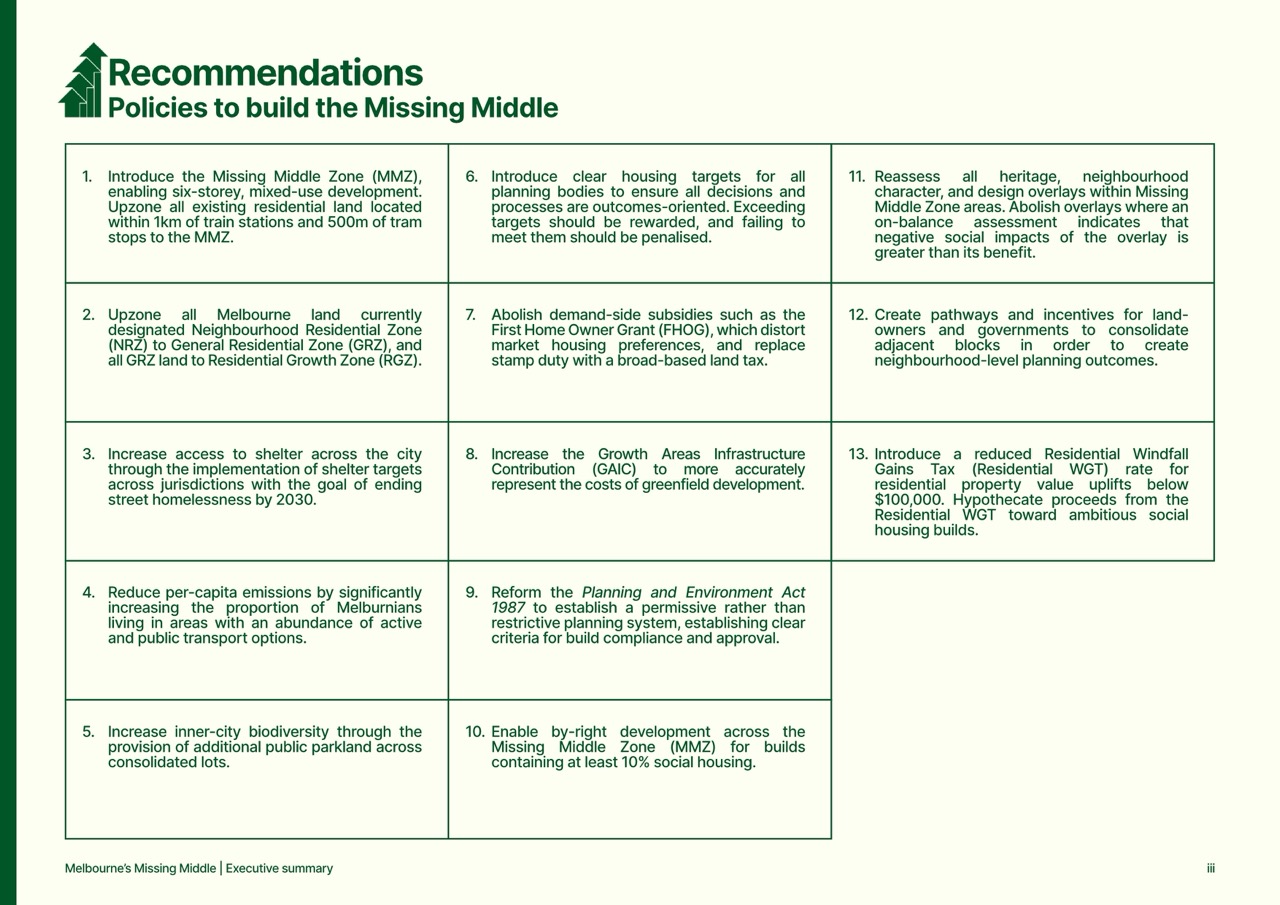Missing Middle Housing Targets – YIMBY Melbourne
2024-04-17
Missing Middle Housing Targets
An accountable system for housing abundance.
| Total target: | 40,000 homes/year |
| Total land to build new housing: | 22,298 MCGs |
| Annual increase in housing delivery: | 1.9x |

Planning for a better Melbourne
Melbourne’s planning system is currently focused on processes, rather than outcomes. As a result, the system lacks accountability across the board. So when a council utilises restrictive planning practices to stop new homes being built, there is nothing anyone can do.
But no council exists in a vaccuum. When one LGA works to overwhelmingly block new housing, they impose greater economic costs not just on their own residents but on the entirety of Melbourne.
It is time to introduce accountability to our city’s planning system. Through broad upzoning and a clear set of incentives shared by all inner-middle Melbourne councils, we can ensure that more homes are built across the entirety of our city.
YIMBY Melbourne’s plan to implement housing targets for a bigger and better Melbourne involves four key steps:
- Upzone inner-middle Melbourne, increasing zoned capacity by 7.7x
- Publish annual binding housing targets for the 19 LGAs where demand for infill housing is highest
- Enforce housing targets through revenue-neutral ‘carrot and stick’ incentives
- Deliver 40,000 new homes per year across inner-middle Melbourne
We know we need more homes where people want to live, which is why our housing target model is demand-driven. That means that targets are higher when demand outstrips supply, and targets are lower when supply meets demand.
So, the best way for any Council to lower their housing target is simple: build more homes where people want to live.
Housing targets in context
Melbourne is growing. Our city’s urgent need for more homes is clear to all Victorians, and yet most of the policy implemented to-date has been edge-tinkering: granny flats, Future Homes, and the scattered beginnings of outer-urban activity centres.
Since the introduction of Plan Melbourne, the city has relegated new apartments to a tiny number of “activity centres” on the city’s most polluted, noisy, and dangerous roads.
Meanwhile, the best blocks of land—those located near public transport on quieter side streets—have been locked up under restrictive zoning and overlays, enforced by local governments on behalf of their most wealthy residents.
Land speculators are happy because they can more easily buy up the lion’s share of developable plots, while rich NIMBYs are also happy because their assets are protected. But this status quo is inequitable, it’s eroding our social compact, and it’s making our city worse.
For Melbourne to remain a city that values the quality of life of its residents, we need to permit gentle density across each and every one of our most amenity-rich and productive regions, enabling new human-scale homes to be built where people want to live.
People should not be restricted to a handful of arbitrarily-defined activity centres. Rather, they should be able to live across the entirety of the city, free to thrive as part of an interconnected network of 20-minute neighbourhoods across all 1,992 of Melbourne’s tram stops and train stations.
Melbourne already has a plan to fix its missing middle: we laid it out within Melbourne’s Missing Middle, where we demonstrated the overwhelming evidence of densification’s social, environmental, and affordability benefits.

This followup report codifies these benefits by outlining a new housing delivery paradigm across the 19 inner-city Melbourne councils where demand for denser living is highest.
YIMBY Melbourne’s missing middle reforms will introduce fairer missing middle zoning, underpinned by enforced housing targets for each local council, ensuring that abundant housing is created city-wide, and for everyone.
Annual housing targets
YIMBY Melbourne’s evidence-based housing targets reflect the demand and capacity for housing growth across LGAs under more permissive zoning.
Each LGA’s target has been carefully calculated based on real-world information. The full target calculation methodology is available later in this report.